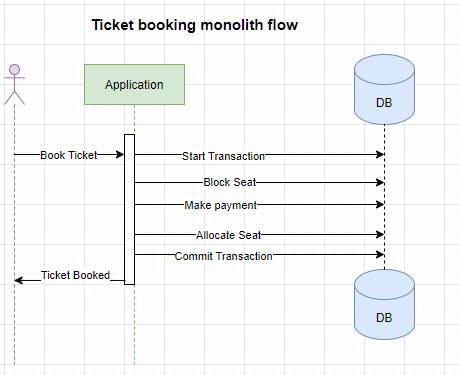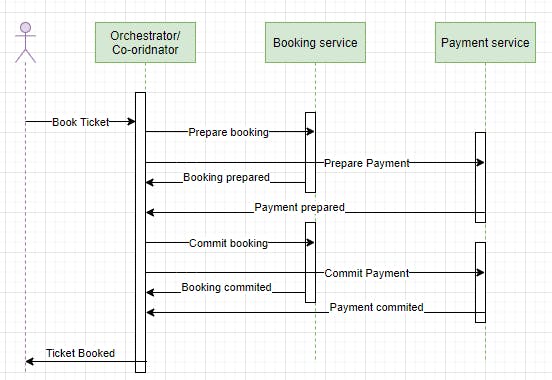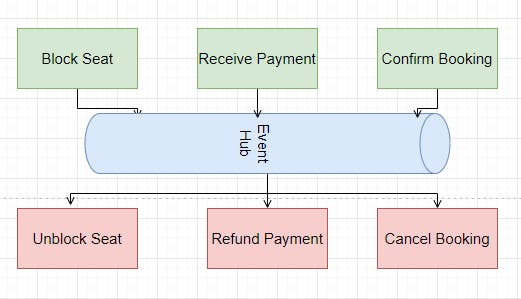Distributed transactions in microservices refer to transactions that involve multiple microservices, each handling a part of the transaction, and coordination is required to ensure the transaction’s atomicity, consistency, isolation, and durability (ACID) properties.
Spring Boot provides several features to manage distributed transactions in a microservices architecture. Spring Boot can use either the 2PC or Saga pattern to manage distributed transactions, depending on the specific needs of the application.
One way to implement 2PC in Spring Boot is to use the XA (eXtended Architecture) protocol, which allows multiple databases to participate in a single transaction. Spring Boot provides support for XA transactions through the Atomikos and Bitronix transaction managers, which can be used to coordinate transactions across multiple services.
Another approach is to use the Saga pattern, which can be implemented in Spring Boot using the Spring Cloud framework. Spring Cloud provides a framework for building microservices-based applications, and it includes features such as service discovery, load balancing, and fault tolerance.
Let's understand this concept of distributed transaction with Train booking system example
Monolith Train Booking System

In the train ticket booking example above, if an actor sends a book ticket action to a monolithic system, the system will create a local database transaction that works over multiple database tables (account table, booking table). If any step fails, the transaction can roll back and data consistency is guaranteed by the database’s ACID (Atomicity, Consistency, Isolation, Durability) property
To achieve high horizontal scalability we can break this monolith into multiple microservices. When we break down this application in microservices we face 2 major challenges.
How to maintain a transaction’s automicity?
How to manage the transaction isolation level for concurrent requests?
We can address these challenges by two-phase commit (2PC) pattern or SAGA pattern. Let's try to understand each in a bit more detail
Two Phase Commit — 2PC

The 2PC pattern is a traditional approach to distributed transactions, where a coordinator manages the transaction by communicating with all the participating services. In the first phase, the coordinator asks all services to prepare for the transaction. If all services are ready, the coordinator proceeds to the second phase, where it asks all services to commit the transaction. If any service fails to prepare or commit, the entire transaction is rolled back. This approach can ensure atomicity of the transaction, but it can also result in performance issues due to the additional coordination required between the services.
Problems with 2PC
Performance: As microservices are often designed for horizontal scalability and rapid development, the use of a centralized coordinator can become a bottleneck and degrade performance. Since the coordinator needs to communicate with all participating services to manage the transaction, it can result in increased latency and blocking of resources, making it difficult to scale.
Complexity: 2PC adds an extra layer of complexity to the system by requiring a central coordinator to manage the transaction. This means that the architecture needs to be designed with additional components and mechanisms, which can increase the complexity of the system.
Single Point of Failure: The coordinator is a single point of failure, which can impact the entire system if it fails. This can lead to the transaction being unable to complete, and data inconsistencies can arise if there is no mechanism to roll back the transactions.
Locking: Resources used by the services are locked until the whole transaction is complete, which can result in reduced scalability and availability.
Distributed Transactions: Distributed transactions are inherently more difficult to manage, as there is a higher degree of coordination and communication needed between the services, which can be impacted by network latency and failure.
Saga Pattern

The Saga pattern is an alternative approach that breaks down a transaction into a sequence of smaller, local transactions. Each local transaction updates the local database of a service, and if any local transaction fails, compensating transactions are triggered to undo the effects of the previous transactions. This approach can handle the high concurrency of requests and scale well, but it may require more complex logic and can result in eventual consistency in the system.
It’s important to note that choosing the right approach will depend on the specific requirements of the application, and each approach has its trade-offs in terms of consistency, availability, and scalability.
Summary
Spring Boot provides several features to manage distributed transactions in a microservices architecture, including support for both the 2PC and Saga patterns. Both 2PC and Saga patterns are approaches to managing distributed transactions in a microservices architecture, but they have different strengths and weaknesses.
Two-phase commit (2PC) is a traditional approach that relies on a centralized coordinator to manage the transaction across multiple services. It ensures that all services commit or roll back the transaction atomically, ensuring data consistency. However, 2PC has several disadvantages in a microservices architecture, including performance, complexity, single point of failure, and locking.


